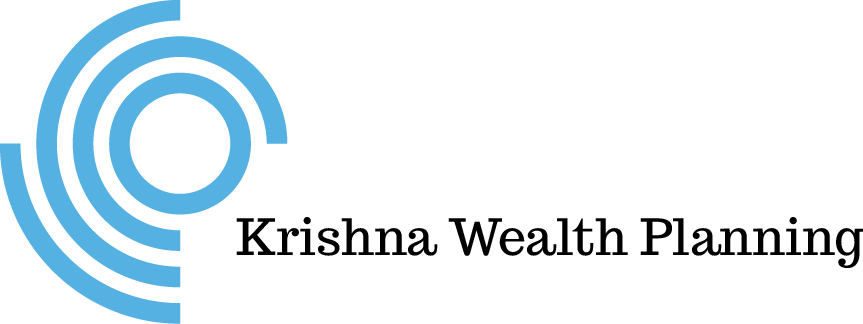9-Minute Read
Among competing financial priorities, funding education for our children can often feel the most daunting. But it is workable with some thrift and discipline. When saving for college, the vehicle of choice for most parents is the qualified tuition program, more commonly known as the 529 plan. This piece explores three questions to help enhance your experience using a 529 Plan:
· Will Your Household Actually Benefit from Using a Plan?
· What are the Top Criteria for Choosing a Plan?
· How do you Avoid Pitfalls when Ultimately Making Distributions?
Education Funding – Daunting, but Workable
As a financial advisor, I’ve seen varying attitudes from parents when deciding if and how much to save towards college for their children. Some are anchored to their own experiences in college years ago. This sometimes means wanting their children to complete college without any financial strain or debt burden upon graduation. Others who had to work and pay their way through college may feel their children need more “skin in the game” even if that means facing debt after graduation. There are even some that not emotionally anchored. Instead, they are simply concerned with the tradeoffs of funding college versus ensuring their own financial goals and retirement stay on track.
Regardless of propensity to save, most understand the challenge our children face today is as daunting as ever. According to the College Board’s latest published charges, the average cost for the 2010-20 school year is $21,950 for public in-state and $49,870 for private universities. While there are factors that can bring down the actual price students and parents pay, the potential cost of funding a four-year education can range from roughly $88,000 to $200,000 per child.
For those who have both the foresight to get in front of these costs and the financial wherewithal, they can and should seek an efficient way to save for college. As noted above, the savings vehicle of choice for most parents is a qualified tuition program, which we will refer to here on out as the 529 plan. For a general overview of 529 plans, you can read this introductory piece from savingforcollege.com. We can then turn to exploring the following questions.
Will Your Household Benefit from using a 529 Plan?
All else equal, if you’re capable of saving a certain amount of dollars towards college, the main question becomes “Where do you save money?” Hopefully you don’t answer “Under my mattress!” A better answer might be “My taxable investment account”. If so, I’d agree and that becomes at least one hurdle a 529 plan should attempt to beat.
In either case (529 or taxable account), money is contributed with after-tax dollars. The difference is money in a 529 plan can grow tax deferred. Growth in a taxable account gets taxed along with way. That is all the income the account produces (interest, dividends, capital gains) are all possibly subject to taxation in the year income is received. They are simply tax inefficient. To be fair, there are other advantages to a taxable account, and I noted a few of them in an earlier piece The Simpler Retirement Plans for Small Business.
So, should all families saving for college contribute to a 529 plan? Maybe not. Given the same dollar amount contributed to a plan, different families can experience different levels of benefits.
The higher your household income, the higher the tax rate you can expect to pay on your investment income and the more you may be inclined to use a 529 plan. For the purposes of this section, let’s crudely define a higher income household as one being a married couple with $100,000 or more in taxable income.
Higher income families can try to compare the benefit of saving in a 529 plan to that of simply using a taxable investment account. While we won’t use numbers here, the magnitude of the expected benefit will be driven primarily on these two factors.
· Factor One – length of investment horizon. If your child is only a few years away from the start of college, the cumulative tax savings you can expect from a 529 plan wouldn’t be as great if your child was over 15 years from college and you started saving early and often.
· Factor Two – Investment performance (net of fees). Because taxable accounts will have an annual “tax drag”, the cumulative impact of that drag is based on the investment horizon, all else equal. However, if better investment performance (net of fees) can be obtained in a taxable account, that can help offset the difference. Compared to a 529 plan, taxable accounts can be more flexible in terms of investment choices available and how often investment allocations can be changed. That flexibility doesn’t guarantee higher returns, but it might be a factor influencing your decision.
Higher income families might also find the estate planning benefits to using a 529 to be another incentive. For a typical plan where the parent is the owner and the child is the beneficiary, it is considered held outside of your taxable estate.
While higher income families may have multiple reasons to use a 529 plan, lower income families (say under $100,000 taxable income) may have just as many reasons not to use one. Here are just a few reasons:
· If regularly funding a 529 plan is not feasible, it may not be worth dealing with its complexities, a couple of which are discussed later in this piece.
· Some families may be better off doing whatever savings they can manage in tax deferred IRAs. Distributions, even if done before age 59 ½ wouldn’t be subject to the 10% penalty if distributions are used for qualifying college expenses.
· Furthermore, unlike 529 plans, balances in IRA accounts are not counted against families who are attempting to receive need-based financial aid.
What are the Top Criteria for Choosing a 529 Plan?
The first and likely most important criteria is determining if your state of residence provides an income tax benefit for participating in a 529 plan. If you live in one of the nine states that do NOT have a state income tax, as noted by Jim Probasco, this first point wouldn’t apply to you. For everyone else, see if your state provides an income tax deduction or credit based on the contributions you make. If so, using your home state’s plan could have one large advantage over any other state’s plan.
Tax benefits do vary from state to state. Luke Delorme, in a recent article in the Journal of Financial Planning6, looked at every state in the country to estimate the relative tax advantage a resident would have using their state’s 529 plan over using a taxable account. The result was a ranking of each state by its expected “tax alpha”.
· Interestingly, the states that came out on top include Indiana, Vermont, Oregon, Iowa and Washington, D.C. Common characteristics of these states are that they have high state income tax rates coupled with generous tax benefits for 529 plan contributions. Technically Indiana doesn’t have a relatively high state tax rate, but it does currently provide the most generous tax credit (20% of contributions up to a $1,000 maximum credit).
· Conversely, states that ranked near the bottom (aside from the states with no income tax) were Kentucky, North Carolina, New Jersey, Delaware, Maine and California. These states currently do not provide tax incentives for making 529 plan contributions.
It’s important to note these rankings referenced above are only based on the state tax benefits, not underlying characteristics of the 529 plans themselves. A more thorough review should involve looking at the costs of the plan. Each state’s plan should have a clear disclosure of costs, but they are often broken down into costs for administering the programs and the costs for the investment managers. Another important element of cost is whether the plan you select is sold directly through a financial advisor or broker. Direct sold plans do not have sales-related fees.
Finally, you could look at the investment selections available. Most plans now have options where you can select an “age-based” track. While I’m not as big a fan of this approach for retirement savers (e.g. 401k), I think age-based solutions are often good defaults for college savers because the time frame for distributing funds is usually well defined and limited in duration. So, strategies that automatically adjust down volatility risk as the college start date approaches can make sense.
Alternatively, a plan may allow you to customize your strategy to have more control on the asset allocation. Just make sure the plan uses fund managers that invest with a philosophy in line with yours. If you’re not sure, this is a great conversation to have with a financial advisor.
Disclosure: My wife and I use the Utah 529 Plan for our daughter. In my opinion, it has a good combination of investment choices and cost structure. Living in Texas, which is one of those nine states without an income tax, gave us flexibility in choosing a plan. But Utah’s plan is not the only good option available. Krishna Wealth Planning does not receive compensation for the recommendation of any state’s 529 savings plan.
How do you Avoid Pitfalls when Distributing from a 529 Plan?
Now let’s fast forward. When the time comes to distribute money to pay for college, the good news is that 529 funds can be used at any higher education institution in the US or abroad that accepts federal financial aid programs. Still there are two general pitfalls I want to be sure you avoid.
Exposing Part of your Distribution to Taxes or Penalties
To avoid taxes or penalties on a distribution, the first hurdle (and it usually isn’t a large one) is that the student must be enrolled in an eligible college program on at least a half-time basis. The second hurdle is there are qualified expenses that equal or exceed the amount of the distribution taken from the 529 plan. These eligible expenses include:
· Tuition and Fees
· Books, Supplies and Equipment (must be required by school)
· Expenses for Special Needs Beneficiary
· Computers and internet access (if used primarily by the beneficiary for school)
· Room & Board, but not greater than the following two amounts:
o Allowance for room & board, as determined by the school
o Actual amount charged if student is residing in housing owned or operated by school
To the extent your distribution exceeds these qualified expenses, you may need to report non-qualified distributions on your tax return. This can result in a portion of your distribution being treated as taxable income along with a 10% penalty. More details on how this calculation works can be found in this piece from Zacks.
Not Coordinating Distributions with other Tax Credits
For the second pitfall, it’s important to know that you can’t claim multiple tax breaks for the same education expenses incurred. Simply receiving a tax-free distribution from a 529 plan is considered one of those tax breaks.
What’s another tax break? If you’re able to claim a tax credit in the same year as a 529 plan distribution, you should be careful. For example, the American Opportunity Tax Credit (AOTC) provides a credit up to $2,500 per year for each eligible student (up to $10,000 for the first 4 years). Household income limits do apply when claiming this credit.
Continuing this example, to receive the full AOTC credit of $2,500 you must spend $4,000 on qualifying expenses. Notably, these expenses are defined differently than the list above. Tuition counts, but room and board does not. Moreover, the $4,000 must be paid resources outside of the 529 plan! That might sound limiting, but there is some flexibility. The money can come from a bank account, different investment accounts or even student loans.
This all leads to one very general “rule of thumb”: If you’re eligible for other education-related tax benefits, be careful not to distribute funds from the 529 plan too quickly. Spreading out distributions over the college years could be prudent.
A Few More Considerations when Making Distributions
· If scholarships are available, this money typically reduces what counts as your qualified education expenses. However, you can still distribute money from your 529 plan without penalty up to the amount of the scholarship received. Just be prepared for the earnings portion of your distribution to be considered taxable income.
· This piece focused on using 529 plans for higher education. But a recent law change now allows up to $10,000 per year per child to be distributed for private elementary or secondary school tuition. Care still needs to be exercised here as there are states that have not adopted the Federal 529 plan rules as noted by Robert Farrington.
· If after your child (hopefully) completes college and there are unused funds in a 529 plan, you can change the beneficiary of the plan to another family member. This is usually as simple as submitting a form to the trustee of the plan.
· Gary Halbert recently wrote an interesting piece: How the “SECURE Act” Will Affect Americans’ Retirement. It is possible Congress will pass a bill allowing 529 plan funds to be dispersed for making student loan payments. That might provide another option to efficiently liquidate a 529 plan in the future.
One Piece of a Larger Puzzle
Hopefully this piece has provided some of the key questions to ask and consider when choosing and using a 529 plan. Notably any savings plan may not the only way to fund college expenses. Funding ever rising college expenses is a challenge that may require multiple solutions. Ultimately, it might involve a combination of savings, student loans, work study and scholarships.
Regardless if you are starting or completing your college savings journey, I do wish you the best. If you have comments or questions on this piece, please drop me a line at: [email protected]
References
1. https://research.collegeboard.org/trends/college-pricing
2. https://www.savingforcollege.com/intro-to-529s/what-is-a-529-plan
3. https://krishnawealth.com/the-simpler-retirement-plans-for-small-business-owners/
5. https://www.investopedia.com/financial-edge/0210/7-states-with-no-income-tax.aspx
6. College Savers: What is the Expected Tax Alpha of 529 Plans by Luke Delorme, Journal of Financial Planning, November 2019
8. https://finance.zacks.com/distribution-529-plan-reported-2286.html
9. https://www.irs.gov/credits-deductions/individuals/aotc
The information on this site is provided “AS IS” and without warranties of any kind either express or implied. To the fullest extent permissible pursuant to applicable laws, Krishna Wealth Planning LLC (referred to as “KWP”) disclaims all warranties, express or implied, including, but not limited to, implied warranties of merchantability, non-infringement, and suitability for a particular purpose.
KWP does not warrant that the information will be free from error. None of the information provided on this website is intended as investment, tax, accounting or legal advice, as an offer or solicitation of an offer to buy or sell, or as an endorsement of any company, security, fund, or other securities or non-securities offering. The information should not be relied upon for purposes of transacting securities or other investments. Your use of the information is at your sole risk. Under no circumstances shall KWP be liable for any direct, indirect, special or consequential damages that result from the use of, or the inability to use, the materials in this site, even if KWP or a KWP authorized representative has been advised of the possibility of such damages.
In no event shall KWP have any liability to you for damages, losses, and causes of action for accessing this site. Information on this website should not be considered a solicitation to buy, an offer to sell, or a recommendation of any security in any jurisdiction where such offer, solicitation, or recommendation would be unlawful or unauthorized.




